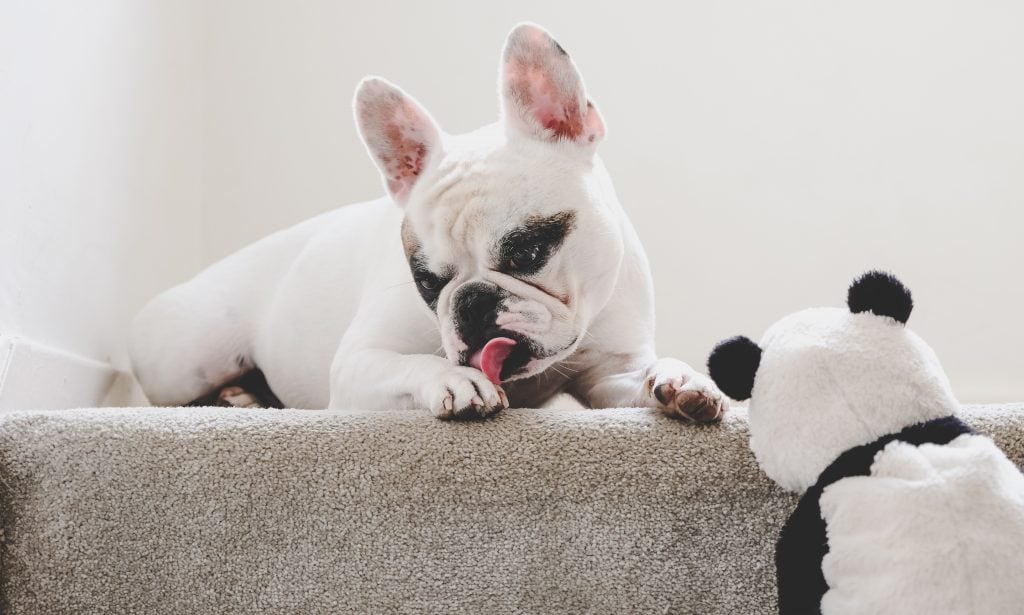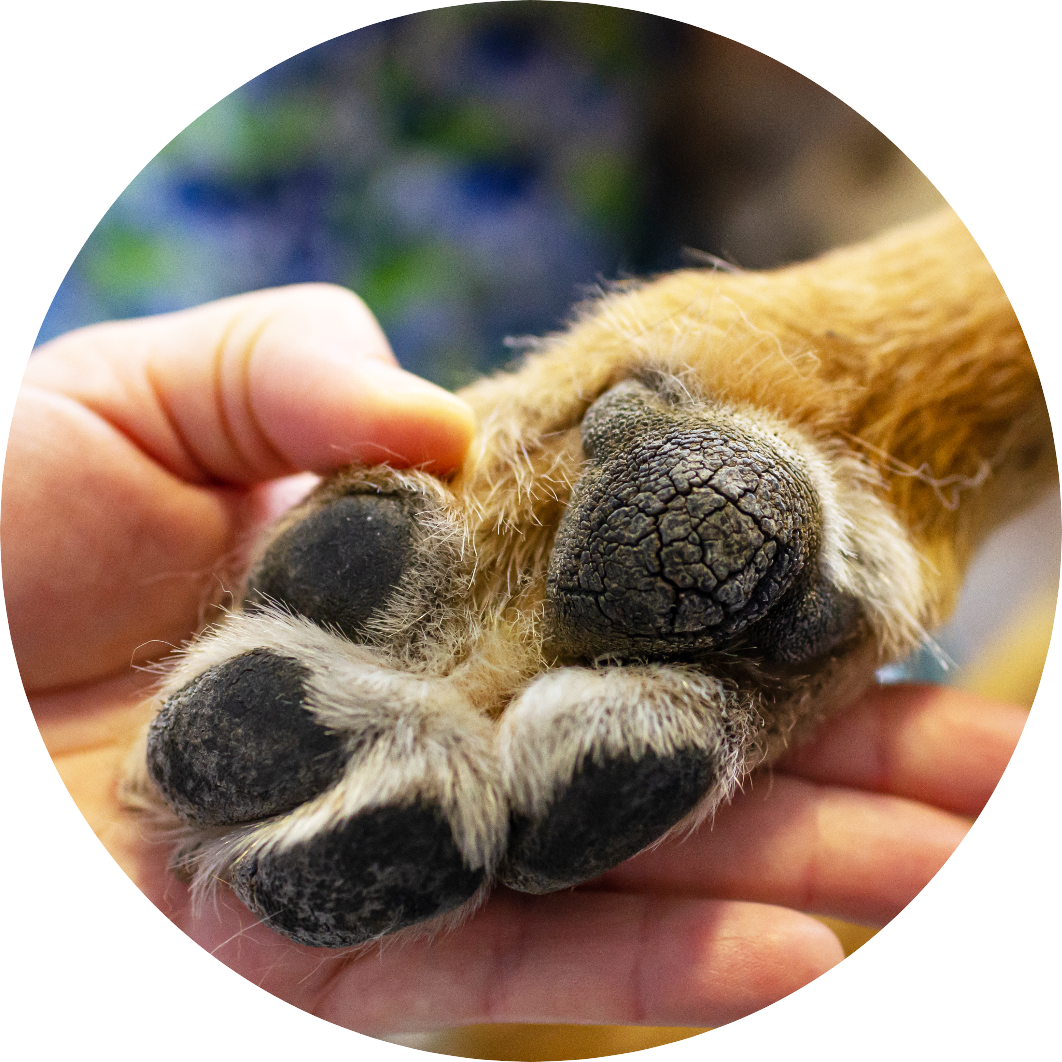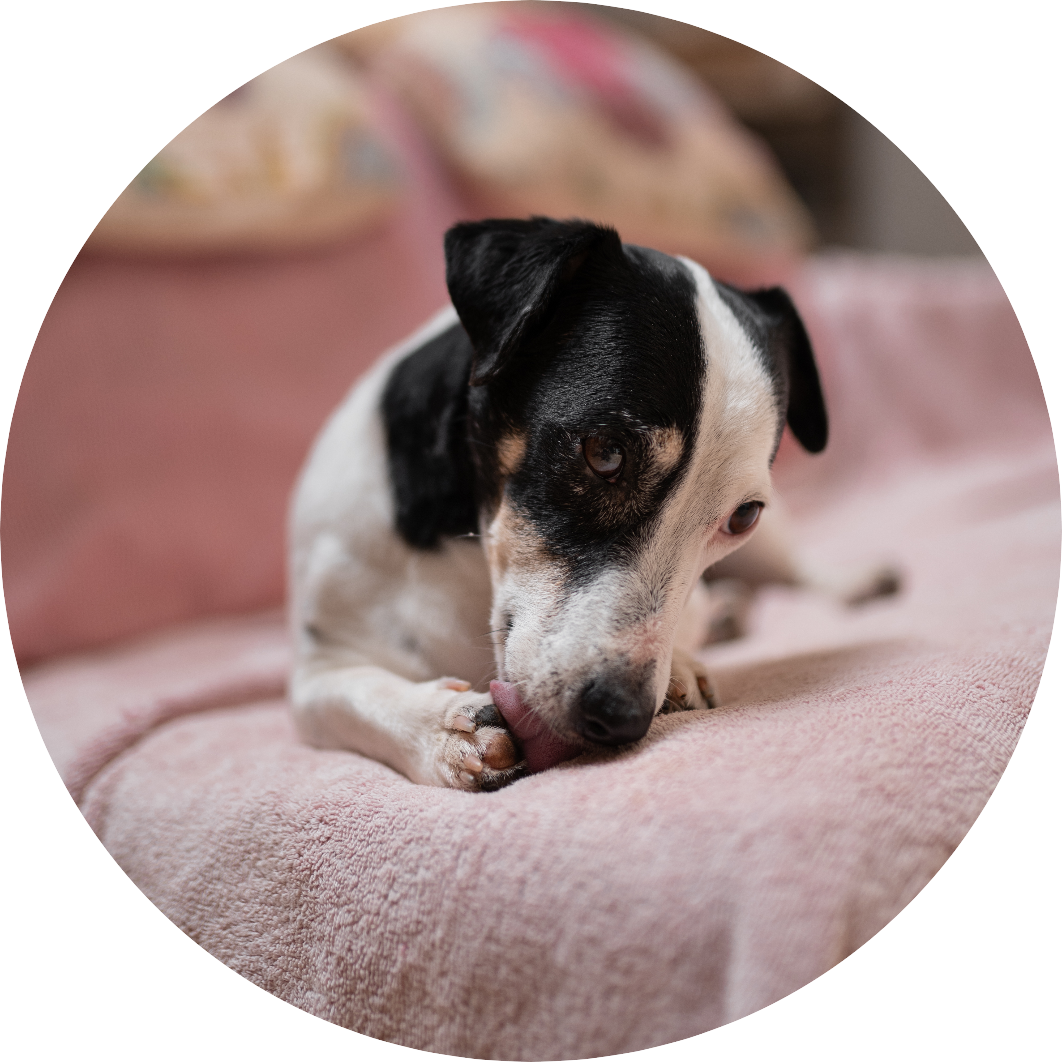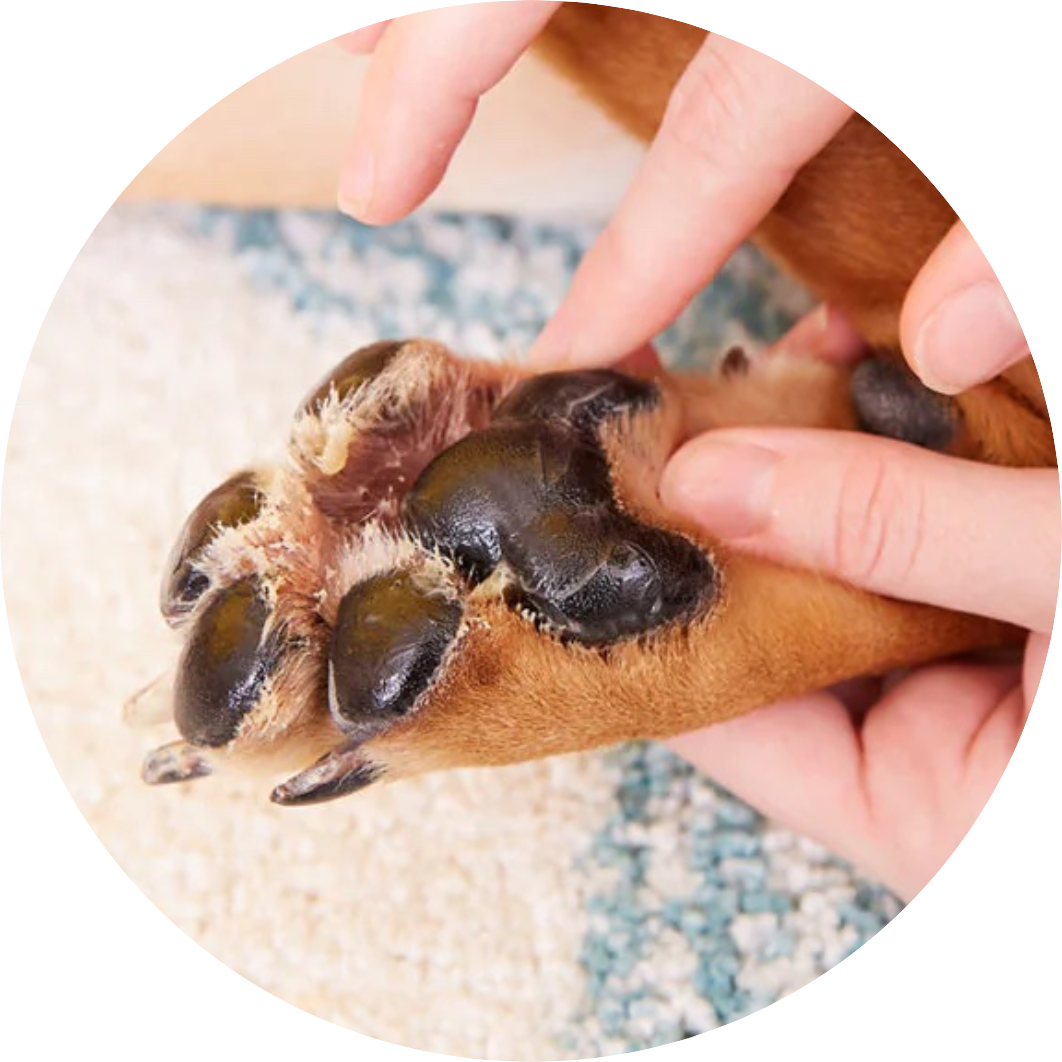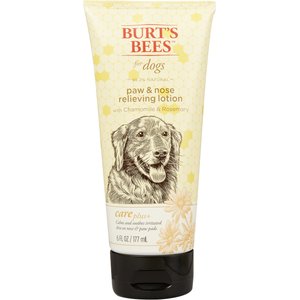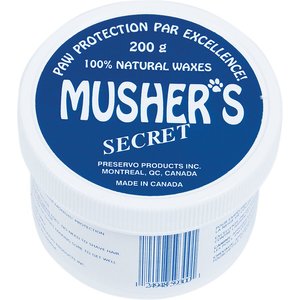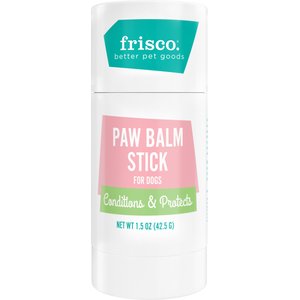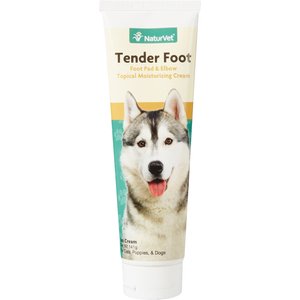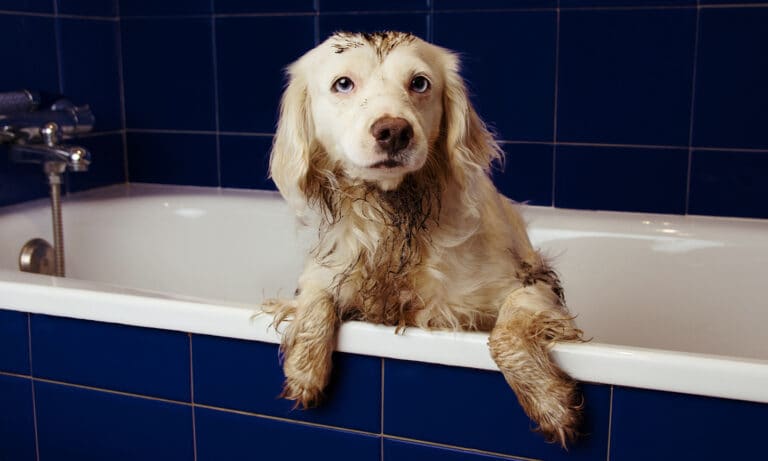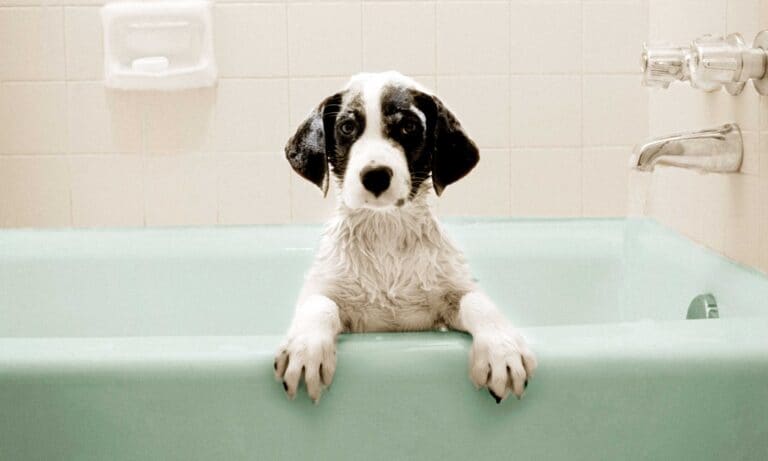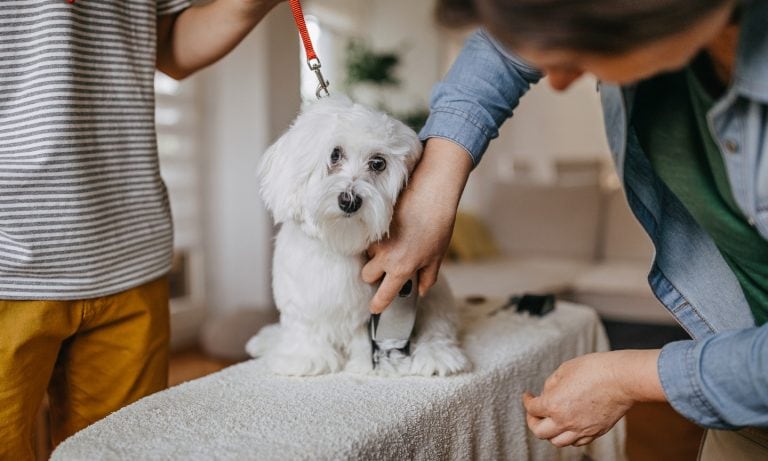Dog paw pads are meant to be tough, but even so, they aren’t immune to issues. Because they make regular contact with the ground and can take a beating, sometimes they crack.
While they can make your dog uncomfortable, cracked dog paws aren’t always a cause for concern. But if you notice other symptoms—or excessive licking—it’s a good idea to step in.
We spoke to two vet experts about not only at-home solutions for caring for cracked dog paws but also signs when it might be time to take your dog to the vet—and more.
Click to jump to each section:
Symptoms of Cracked Dog Paws
Dog pads protect your dog’s joints by absorbing shock, and they allow him to enjoy time outdoors with his favorite people, says Dr. Kelly Ryan, DVM, Medical Director at Cityscape Vets on Excelsior in Minnesota.
But sometimes, dog pads succumb to wear and tear or crack due to underlying health problems.
Cracked dog paws occur when cracks or fissures appear on the surface of the paw pads. There might be peeling or crusty skin, too.
In addition to these main signs, other symptoms may include:
- Redness
- Inflammation/swelling
- Discoloration on paw pads
- Bleeding
- Limping or holding a paw up (avoiding pressure)
- Excessive licking or chewing of paws
- Changes in behavior/lethargy
What Causes Cracked Dog Paws?
If you have a dog who spends long periods of time playing in the snow, running on concrete or hiking on abrasive terrain, dog paw wear and tear is certainly a possibility.
Exposure to rough surfaces and sharp objects, like rocks, can cause contact irritation, where the paws feel funny or itchy or inflamed, which can lead to further damage by self-mutilating, explains Dr. Tiffany Margolin, DVM, ABVP.
“Usually the contact irritation turns into cracked paws because of the dogs over-chewing or licking at the paws due to the sensations,” she says. “Licking and application of saliva is the only way a dog knows to soothe and accelerate healing of their own body.”
But while wear and tear is common, it isn’t the only reason for cracked dog paws. Here are some more possibilities, including some health issues pet parents should be mindful of:
- Exposure to harsh chemicals: Harsh chemicals, like ice melt and floor cleaners, can cause your dog’s paws to become irritated and cracked.
- Extreme weather: Walking on hot pavement can cause paws to blister, and rough, rocky terrain can cause cuts in the pads. On the flip side, cold weather can also cause dryness, which makes your dog’s pads more susceptible to cracking.
- Autoimmune diseases: Some autoimmune diseases can cause brittle skin and nails that makes paw pads more susceptible to cracking.
- Allergic reactions: Allergies can cause itchiness and irritation that makes your dog lick or chew his paws. Ultimately, this can lead to cracking.
- Hormonal imbalances: Hormonal imbalances, like Cushing’s disease, and hypothyroidism can cause chronic dryness, skin irritation and cracking.
- Liver disease: If the paw pad is injured and doesn’t seem to be healing, Dr. Ryan says that certain types of liver disease and dermatologic health conditions could also be to blame. “All of these conditions can look similar and often need a biopsy to confirm a diagnosis,” Dr. Ryan adds.
- Nutritional imbalances: One example is a zinc deficiency. Zinc is an important nutrient in a dog’s diet and if your dog isn’t getting enough, it can lead to cracked dog paws as well as hair loss, lethargy, crusty skin lesions around the nose and eyes, and poor growth.
- Hyperkeratosis: Hyperkeratosis is an abnormal growth of a protein called keratin and is a common cause of cracked paws in senior dogs. “[Hyperkeratosis] means that the skin is thickened on each of the pads, predisposing them to cracking, says Dr. Margolin. “This can be caused by immune or metabolic diseases, or fungus or parasitic causes, and sometimes it’s strictly weather or genetic related.”
When To See A Vet About Your Dog's Cracked Paws
Some cracking of the dog paw pads might be a normal result of just walking around on uneven terrain. But if you notice any of the following, it’s time to see your vet:
- If the cracks get deeper
- If the paws start bleeding
- If you see your dog starting to show signs of discomfort
Because the pads are an extension of your dog’s skin, Dr. Margolin also suggests looking at other areas of your dog’s body, including the face and ears, to see if the cracking and irritation is part of a more widespread problem. If you see similar symptoms somewhere else in the body, this could indicate that something else is going on that needs to be addressed by a veterinarian.
How Your Vet Will Help
If there’s a chance that there’s an underlying medical issue causing the cracks, Dr. Ryan says your veterinarian will order a full chemistry and complete blood panel at a wellness visit as a start.
“This blood test would look at kidney, liver and thyroid function, as well as red and white blood cell count,” says Dr. Ryan. “Based on these findings and your pet’s response to therapy, further diagnostics—including a skin biopsy—will likely be recommended.”
Dog Paw Home Care: Caring for Your Dog's Cracked Paws
If the cracks in the dog paw don’t seem very deep and are not bleeding, you can try some home remedies–offered by Dr. Ryan and Dr. Margolin–to see how they respond.
Keep in mind that these aren’t overnight fixes. It can take two to three weeks for cracked paw pads to heal with regular care.
Clean Their Paws
Clean the pads with a washrag, warm water and antibacterial soap.
Pat the pads dry, then apply petroleum jelly, making sure the petroleum jelly is rubbed in well so your dog doesn’t lick it off, causing more irritation and an upset tummy.
Apply a Moisturizing Balm
For daily care and to keep pads moisturized, use a dog-safe healing and moisturizing topical cream, like Pet MD Paw Balm.
“Make sure to put an Elizabethan collar on your dog so they do not lick the salve right off,” Dr. Margolin adds.
Cover Your Dog’s Feet
Put socks or bandages on your dog’s paws, so they can walk more comfortably while the cracks are healing.
You can also try some additional paw protection, like waterproof dog boots, but heads up: It will probably take your pup some time to get used to walking in booties. (Here's how to train your dog to wear boots!)
Limit the Length of Walks
To further protect pet paws and speed up healing, limit the length of walks, especially in hot or cold weather.
Avoid walking on chemicals, rocky ground and hot surfaces.
Use Protective Measures
Once the pads have healed, you can help protect paws from salt and snow by applying a paw wax or paw balm before heading out on dog walks.
Over-the-counter paw care products are great options for ongoing moisturizing protection against cold and hot surfaces.
Some options include:
More ways to pamper and protect your pup:
Share:
